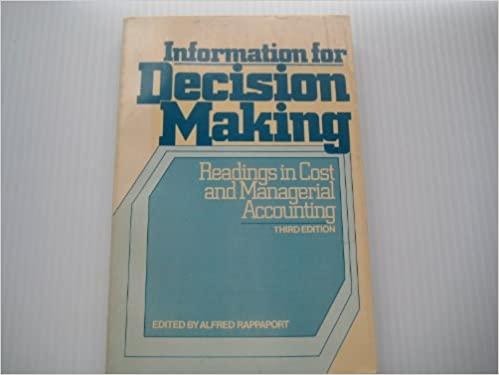Question
Integrated Case KPB Inc., Part II Financial Statement Analysis Part I of this case discussed the situation that KPB Inc., a regional snack-foods producer, was
Integrated Case KPB Inc., Part II Financial Statement Analysis Part I of this case discussed the situation that KPB Inc., a regional snack-foods producer, was in after an expansion program. KPB had increased plant capacity and undertaken a major marketing campaign in an attempt to go national. Thus far, sales have not been up to the forecasted level, costs have been higher than were projected, and a large loss occurred in 2005 rather than the expected profit. As a result, its managers, directors, and investors are concerned about the firms survival. Donna Jamison was brought in as assistant to Fred Campo, KPBs chairman, who had the task of getting the company back into a sound financial position. KPBs 2004 and 2005 balance sheets and income statements, together with projections for 2006, are given in Tables IC 4-1 and IC 4-2. In addition, Table IC 4-3 gives the companys 2004 and 2005 financial ratios, together with industry average data. The 2006 projected financial statement data represent Jamisons and Campos best guess for 2006 results, assuming that some new financing is arranged to get the company over the hump. Jamison examined monthly data for 2005 (not given in the case), and she detected an improving pattern during the year. Monthly sales were rising, costs were falling, and large losses in the early months had turned to a small profit by December. Thus, the annual data look somewhat worse than final monthly data. Also, it appears to be taking longer for the advertising program to get the message across, for the new sales offices to generate sales, and for the new manufacturing facilities to operate efficiently. In other words, the lags between spending money and deriving benefits were longer than KPBs managers had anticipated. For these reasons, Jamison and Campo see hope for the companyprovided it can survive in the short run. Jamison must prepare an analysis of where the company is now, what it must do to regain its financial health, and what actions should be taken. Your assignment is to help her answer the following questions. Provide clear explanations, not yes or no answers.



- Use the extended Du Pont equation to provide a summary and overview of KPBs financial condition as projected for 2006. What are the firms major strengths and weaknesses?
Table IC 4-1. Balance Sheets 2006E 2005 2004 Assets Cash Accounts receivable Inventories Total current assets Gross fixed assets Less accumulated depreciation Net fixed assets Total assets $ 85,632 878,000 1,716,480 $2,680,112 1,197,160 380,120 $ 817,040 $3,497,152 $ 7,282 632,160 1,287,360 $1,926,802 1,202,950 263,160 $ 939,790 $2,866,592 $ 57,600 351,200 715,200 $1,124,000 491,000 146,200 $ 344,800 $1,468,800 Liabilities and Equity Accounts payable Notes payable Accruals Total current liabilities Long-term debt Common stock Retained earnings Total equity Total liabilities and equity $ 436,800 300,000 408,000 $1,144,800 400,000 1,721,176 231,176 $1,952,352 $3,497,152 524,160 636,808 489,600 $1,650,568 723,432 460,000 32,592 $ 492,592 $2,866,592 $ 145,600 200,000 136,000 $ 481,600 323,432 460,000 203,768 $ 663,768 $1,468,800 Note: "E" indicates estimated. The 2006 data are forecasts. Table IC 4-2. Income Statements 2006E $7,035,600 5,875,992 550,000 2005 $6,034,000 5,528,000 519,988 2004 $3,432,000 2,864,000 358,672 Sales Cost of goods sold Other expenses Total operating costs excluding depreciation EBITDA Depreciation EBIT Interest expense EBT Taxes (40%) Net income $6,425,992 $6,047,988 $3,222,672 $ 609,608 ($ 13,988) $ 209,328 116,960 116,960 18,900 $ 492,648 ($ 130,948) $ 190,428 70,008 136,012 43,828 $ 422,640 ($ 266,960) $ 146,600 169,056 (106,784) 58,640 $ 253,584 ($_160,176) $ 87,960 $ ($ $ $ - At EPS DPS Book value per share Stock price Shares outstanding Tax rate Lease payments Sinking fund payments 1.014 0.220 7.809 12.17 250,000 40.00% 40,000 0 1.602) $ 0.110 $ 4.926 $ 2.25 100,000 40.00% 40,000 0 0.880 0.220 6.638 8.50 100,000 40.00% 40,000 0 Note: "E" indicates estimated. The 2006 data are forecasts. a The firm had sufficient taxable income in 2003 and 2004 to obtain its full tax refund in 2005. Table IC 4-3. Ratio Analysis 2006E Current Quick Inventory turnover Days sales outstanding (DSO) Days inventory outstanding (DIO) a Days payable outstanding (DPO) Fixed assets turnover Total assets turnover Debt ratio TIE EBITDA coverage Profit margin ROA ROE Price/earnings Price/cash flow Market/book Book value per share 2005 1.2x 0.4x 4.7x 38.2 85.0 31.4 6.4x 2.1x 82.8% -1.0x 0.1x -2.7% -5.6% -32.5% -1.4x -5.2x 0.5x $4.93 2004 2.3x 0.8x 4.8x 37.4 91.1 18.6 10.0x 2.3x 54.8% 4.3x 3.0x 2.6% 6.0% 13.3% 9.7x 8.0x 1.3x $6.64 Industry Average 2.7x 1.0x 6.1x 32.0 70.0 30.0 7.0x 2.6x 50.0% 6.2x 8.0x 3.5% 9.1% 18.2% 14.2x 11.0x 2.4x n.a. Note: "E indicates estimated. The 2006 data are forecasts. a Calculation is based on a 365-day year
Step by Step Solution
There are 3 Steps involved in it
Step: 1

Get Instant Access to Expert-Tailored Solutions
See step-by-step solutions with expert insights and AI powered tools for academic success
Step: 2

Step: 3

Ace Your Homework with AI
Get the answers you need in no time with our AI-driven, step-by-step assistance
Get Started


